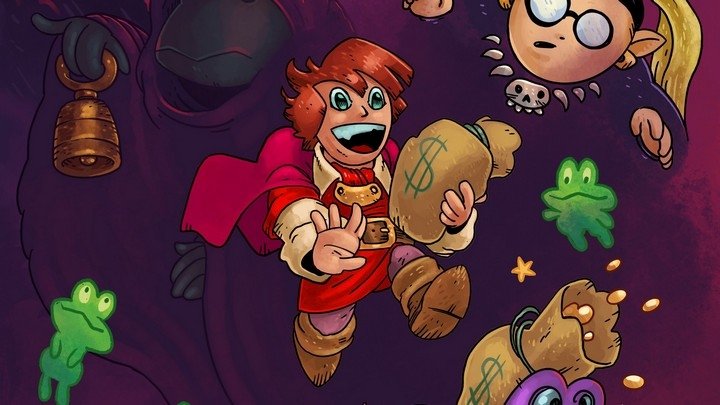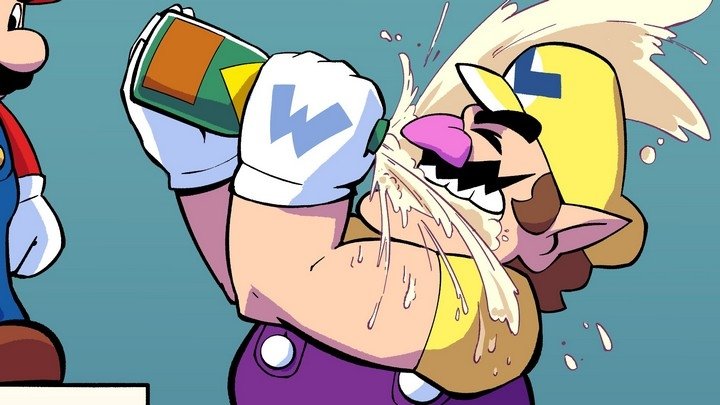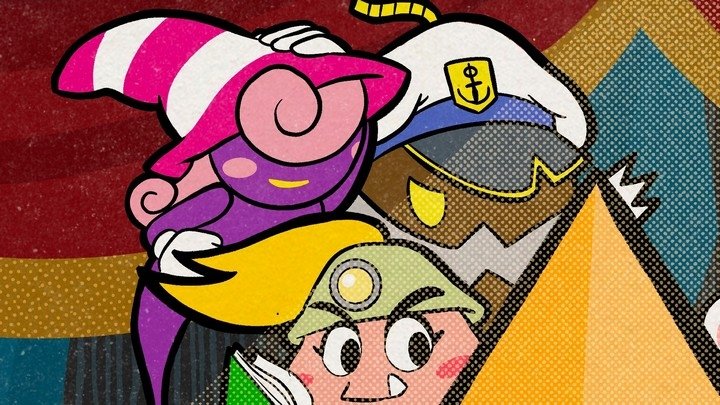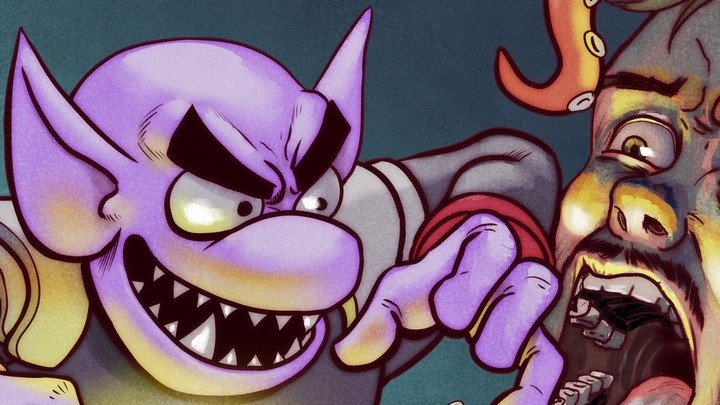Breath of the Wild restores a long-lost sense of uncertainty to Zelda
One of biggest through lines in Nintendo's promotional hype for The Legend of Zelda: Breath of the Wild has concerned its connection to the original Legend of Zelda, which debuted in the U.S. almost exactly 30 years ago. That's a spiritual connection, mind you; the new game looks nothing like the primitive pixels of the NES classic, and if the story shares a direct link (or, perhaps, Link) to the older adventure, Nintendo's keeping it under wraps.
I'm always a little leery of publishers making too much noise about how a new release gets back to a franchise's roots. Generally it creates a too-obsequious air of apology for the direction of a franchise, throwing a lot of hard-working contributors' hard work under a bus. And while it's not unheard of for a long-running series to go off the rails and somehow right itself again further down the road, it doesn't happen as often as one might wish.
The back-to-the-roots approach can work, but it demands a tricky balance. Sometimes developers take an overly literal approach, as with, say, Mega Man 9 — which I love, don't get me wrong. But I do think Capcom could have taken Mega Man back to his roots without actually turning back game and graphical design two decades. And sometimes you have the Tomb Raider series, which has its ups and downs but (despite its overlords' promises to return to the spirit of the original game with every sequel to come along since Tomb Raider III) never quite seems to recapture the sense of isolation and grandeur that made the very first Tomb Raider so captivating.
So, I've taken a cautious, if hopeful, approach to managing my Breath of the Wild expectations since playing it (and coming away deeply impressed) back at E3 last summer. Would Nintendo really get back to the spirit of the NES, or would this be another example of game creators promising to go back to a long-ago, cherished standard without quite grasping what it was its fans really loved about the older game in the first place?

Surprisingly, so far, the answer is: Yes, they got it.
I say "so far" because I haven't even hit the 10-hour mark in the game. For that matter, I haven't even left the opening area, which demands players complete a set of minor challenges spread across a fairly expansive area that nevertheless appears to comprise only a tiny fraction of this version of Hyrule. I mean, I could have moved along by now, but I'm more interested in testing the limits of what I can accomplish straight away. These early hours have already given me confidence that Nintendo really is looking back to the oldest Zelda here by deliberately breaking from the Link to the Past formula that has been the foundation of nearly every sequel beginning with Ocarina of Time.
A Link to the Past set a lot of standards for the Zelda games, but the greatest of these was in the way it locked down the dungeon-and-tool formula. In each sequential dungeon, Link would acquire a new tool or weapon to allow him to overcome specific obstacles throughout the game, with that dungeon serving as a sort of training course. Nintendo designed each labyrinth as a spatial puzzle that could only be solved by mastering the tool within, with the dungeon boss serving as the final exam of sorts. For instance, you needed to collect the Hookshot in order to traverse gaps in the dungeon that contained the Hookshot, and then you had to defeat the boss at the end of the gauntlet by using the Hookshot to reveal its weak point. It was a deft, thoughtful approach to game design... and after being reiterated in half a dozen different sequels, it's become stale and predictable.
In the opening hours of Breath of the Wild, I've already acquired what appears to be the bulk of the main gadgets I'll be using throughout the adventure. This is not a case of sequence-breaking; you literally can't move beyond the opening area until you round them all up. And while you acquire each one in a purpose-built dungeon, those dungeons are small and simple — smaller than any story dungeon in any 3D Zelda to date. I don't know how the dungeons and shrines in later portions of the game will work, precisely, but it could be that the 1:1 ratio of gadgets and dungeons won't be the case with this game. More likely you'll need to complete each shrine or lair by combining and applying your permanent tool set in increasingly complex ways.

So yes, in this sense, Breath of the Wild really does feel like a reversion to the original Zelda. You acquired a number of tools and upgrades in the dungeons there, as well, but in only a handful of cases did you actually need the item in question in order to reach and defeat the boss. And even then, you'd usually need a treasure from a previous area of the game in order to complete a task, e.g. the bow from Level-1 in order to beat Level-6's boss, Gohma.
Nintendo experimented with breaking from the Link to the Past cycle with the most recent single-player Zelda, which somewhat ironically was the direct sequel to A Link to the Past: 2013's A Link Between Worlds. There, you could simply run out and rent (or buy) the tools you needed; the challenge became managing your finances and knowing which tools were needed for each given dungeon. Worlds didn't suffer for separating tool acquisition from dungeon solutions, and I suspect now that it was something of a dry run for what Nintendo hoped to do with Breath of the Wild.
If the Zelda games were finally extricating themselves from the very classic but very familiar rut into which they had worn themselves, Breath of the Wild would deserve praise. But Nintendo has reached back to the franchise's origins in an even more meaningful way: They've given players the freedom to go about the quest however they like.

Make no mistake: Breath of the Wild still has a certain linear path of quest progression to observe. As I said, the task of moving beyond the isolated plateau on which the adventure begins requires you to complete several shrines... but once you've cleared the first one, you're allowed to tackle them in any order. Now, you're likely to complete them in a particular general sequence simply as a matter of expediency, as two of the shrines sit in areas covered with frost. This time out, Link has to be mindful of the temperature of his surroundings; stray too long into the cold and you will freeze to death. But you don't need any special quest item to venture into the frozen wastes — you just need to know how to prepare food and potions, and have an eye for the botanicals and fauna that will result in warming recipes to temporarily insulate Link from the elements. So if you really want, you can head to the shrines in frigid areas first.
This freedom begins literally the moment you set foot outside the cave in which Link awakens after his hundred-year sleep. The game gives you several prompts to nudge you in the proper direction to get the story rolling right away. Once Link surveys his surroundings, the camera swings around to a mysterious old man keeping vigil near Link's Shrine of Resurrection... but nothing is forcing you to speak to him right away. In fact, you can ignore the old man until you run out of things to do (which is quite a lot, and can allow you to stock up on some pretty useful collectibles and weapons).

A couple of minutes after you spot the old man, Link hears a disembodied voice and gets a waypoint marker on his in-game map. The action freezes as this plays out, and my first thought as this transpired was that the game was going to railroad me back to the main quest and constantly hound me with a bossy voice, a la Navi/Midna/Fi. But this turns out not to be the case at all. Once the waypoint appears, you're free to go back about your business and do as you please. And the voice rarely intrudes, content to allow you to take the quest at your own pace.
It's a pleasant surprise in a series that has demonstrated an almost pathological need to hold players by the hand for the past 20 years, but producer Eiji Aonuma has said that he's spent a lot of time taking notes from open-world games, mostly produced outside Japan. Perhaps those games' willingness to sit back and allow players to do as they will helped Nintendo's designers to realize, at last, that people who play video games really do have the deductive reasoning to sort things out for themselves and don't need or want to be constantly nagged back onto the critical path.
So just how much freedom does Breath of the Wild give you from the outset? Well, I've put together a slightly goofy dramatic recreation here of my initial experience with the game (pardon the pantomime). This is footage from a single session from the beginning of the game, slightly edited for time, and it simulates my initial reaction to being given obvious and obtrusive guidance... as well as the disastrous nonsense I got up to after I decided to blow it off.
What ultimately makes Breath of the Wild feel like such a change of pace for the Zelda series — almost like a spiritual reboot — is not that it offers an open world, or that you have the sort of freedom that comes with an open world, or that it contains a huge number of undocumented systems (like recipes and temperature), or any other single element. It's that it does all of these things at once. Nintendo probably could have put out two or three Zelda games featuring one or two of these changes in incremental amounts, but by taking the time to create a game that does all of them at once, they've created something that — at least here at the start — feels like a massive and much-needed leap into modernity.
The most impressive connection Breath of the Wild has to its 30-year-old ancestor is that it improbably recaptures that game's sense of the unexpected. The original Zelda was like nothing we'd ever seen in 1987, and by definition it's practically impossible for a sequel to reproduce that sensation. What made Zelda amazing in the early days is that for its first decade of existence, the series alway brought you something new and unexpected. Zelda II was somehow a side-scrolling action game as well as an RPG. A Link to the Past existed as this intricate puzzle box of a game whose convolutions somehow spanned two dimensions of time and space. Link's Awakening gave us a Super NES-sized adventure on Game Boy, while adding in Mario elements. And Ocarina of Time reinvented A Link to the Past as a game that spanned decades and whose added unique, dimension was the third dimension.

Breath of the Wild has hit me with an urge to explore and discover, to figure out what possibilities await, that I haven't experienced so profoundly since Ocarina of Time. Yes, a lot of the concepts here come straight from open-world action games we've all played over the past decade; but here, those elements have been framed within the workings of the Zelda series. Breath of the Wild moves and sounds like Zelda, which means it's far more polished in its movements and interactions than your average Elder Scrolls adventure (which, again, I love, but the phrase "Bethesda jank" exists for a reason). And its structure already demonstrates a certain thoughtfulness characteristic of the series. In short, it's a modern sandbox action RPG, but crafted with the world-class care we've come to expect from this franchise.
It would be easy for this Zelda to fall flat on its face, to feel like some wannabe attempting to bite off the most successful games of the generation. So far, though, it hasn't. And fair enough: Zelda basically created this style of game, and it's only reasonable to think it should be able to reclaim a place and make a mark on the genre on its own terms.
And perhaps most importantly, Breath of the Wild gives the impression that its open design and many systems have purpose. I half-expected the need to forage for resources (including replacements for Link's oh-so-fragile weapons) would be a drag, but it, too, gives a the impression of purposefulness. I think carefully about each and every arrow I loose at an enemy, because I don't know how soon I'll be able to replace it. And thorough exploration is its own reward. Take as an example my proudest free-roaming accomplishment yet: Stumbling upon a den of bokoblins, including a moblin chief, living in a massive skull-shape cave. My first encounter with them went poorly to the point of fatality... but eventually, I stumbled upon a cache of fire arrows elsewhere on the plateau. With those in hand, I returned and detonated the explosive barrels (yes, they even exist in Zelda) inside the cave, instantly clearing out all but the moblin. The wounded chief rushed me, and I had to defeat it in melee combat. This was hardly a gimme: The flames I sparked ignited his spiked wooden club, upgrading a single successful blow from it from "painful" to "instantly fatal." But I dodged, persevered, and survived. It was even more exhilarating than the moment in the video above in which I crept up silently to steal a bokoblin's discarded weapon only to have the bad guy hear me at the last second and snatch his weapon away a split second before I could grab it myself.
These little moments have happened throughout the time with the game so far, and while you can definitely see the video game logic and limits working beneath it all, Breath of the Wild might actually combine freedom and dynamic systems as well as Metal Gear Solid V. If my time so far have been a true preview of the experiences that lie ahead once I get on with the plot and descend from the Great Plateau, Breath of the Wild should be 100 or so hours of pure pleasure in the style of the original Zelda, but with modern scope and style. That sounds like the greatest link to the past I could hope to ask for, really.




